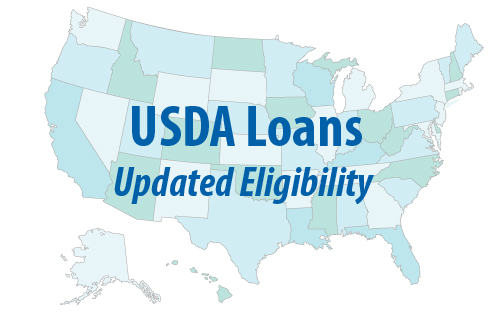USDA Eligibility
USDA eligibility goes down to the buyer and the home. The first thing to be assessed is the house being bought as it needs to meet specific criteria.
It should be in a ‘rural’ area, which is defined as one that has less than 20,000 people. The person buying the house must meet the set income caps. The comparison is made based on the local median salary, and you should be making below 15% of this amount. The other USDA eligibility requirement states that the house should be your primary residence as people are not allowed to take these loans for vacation and investment houses. The loans are used to buy single-family homes, and no duplexes can be financed.
Individuals should also meet USDA eligibility requirements that specify the repayment terms and standards. First, you should have a stable job and income, something that can be backed by your tax returns. Your FICO credit score should be at least 640. Lastly, you should have a debt to income ratio of 41% or less.
USDA Eligibility; Do I Qualify for this Loan?
When shopping around for a home loan, you have a couple of options to look at. The regular mortgages are not very favorable, a reason why people tend to look at some of the loans offered and backed by the government. One popular type of such loans is the USDA loan. These are mortgages guaranteed by the US Department of Agriculture as part of the USDA Rural Development Guaranteed Housing Loan program. The money is available to home buyers with low and average income, and it offers full financing with reduced mortgage rates and insurance premiums. In a nutshell, these loans are meant to give people who might not afford to pay for a house a cushioned way of doing it.
With the seemingly good terms, it is a no-brainer that people will be scrambling for these loans. This is why you need to learn more about USDA eligibility and see if you qualify for one or not. Read on;
What are USDA Loans?
These loans are guaranteed by the US Department of Agriculture. This is the insurance that protects lenders in the niche, something that allows them to offer reduced interest rates and no down payment loans. This encourages people to own homes and foster development in these areas.
How Do The Loans Work?
USDA loans are not all that different from regular mortgages.
If you look at the USDA eligibility terms and find that you qualify, the lender will finance the entire cost of a home. The benefit is that you will get mortgage rates that are better than the market averages. This is because the mortgages are discounted by the state, something that gives borrowers some sort of relief. You do not have to raise the down payment.
Apart from that, the rest of the features are similar to that of a regular mortgage.
The repayment schedule is standard, as well as the closing costs, and the prepayment penalties do not count. This way, the two major ways in which these loans are unique are in regards to the type of loan and amount of money needed as down payment.
USDA Loans Mortgage Insurance
USDA backs this loan program by offering protection to lenders in the event of defaulted payments by borrowers. However, it is a self-funded program, and to keep it running, you need to pay for regular mortgage insurance premiums. For standard purchases and refinances, one has to pay a 1% upfront fee at closing, depending on the size of the loan. For all loans, a fee of 0.35% of the remaining principal is charged.
The advantage here is that USDA mortgage insurance that is usually paid upfront is not paid in cash, but added to the loan balance. The rates are lower than what the other mortgages charge, meaning that you only pay a fraction of what others pay.
How do USDA Loans Compare With Other Conventional Ones?
In the United States, USDA loans are usually the lowest available. They are only matched by the VA loans, meant for veterans. These two types of loans offer below-market rates and friendly terms because they are guaranteed by the government. Other programs such as the FHA loans have rates that are slightly higher than the USDA ones.
That said, it is not all smooth with USDA loans, and you need to follow some of the tips for getting the best rates, just like the other loans. The rates are determined on a case by case basis, and you are not guaranteed of getting the ones advertised if your record is not good. To get the lowest rates, work on your credit score and clear debts. If you can make a down payment, the better as it reduces your payments. There are various USDA mortgage lenders available, and it helps to shop around and find one that offers the best rates for your case.

